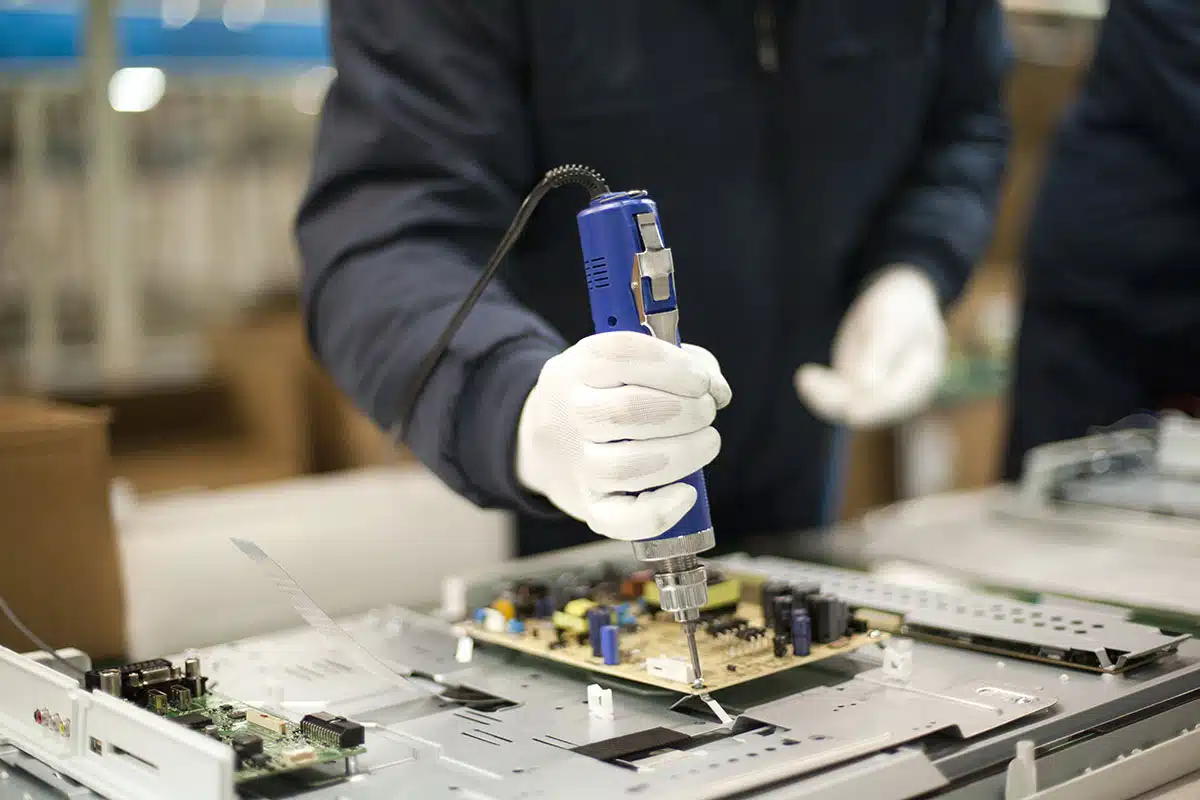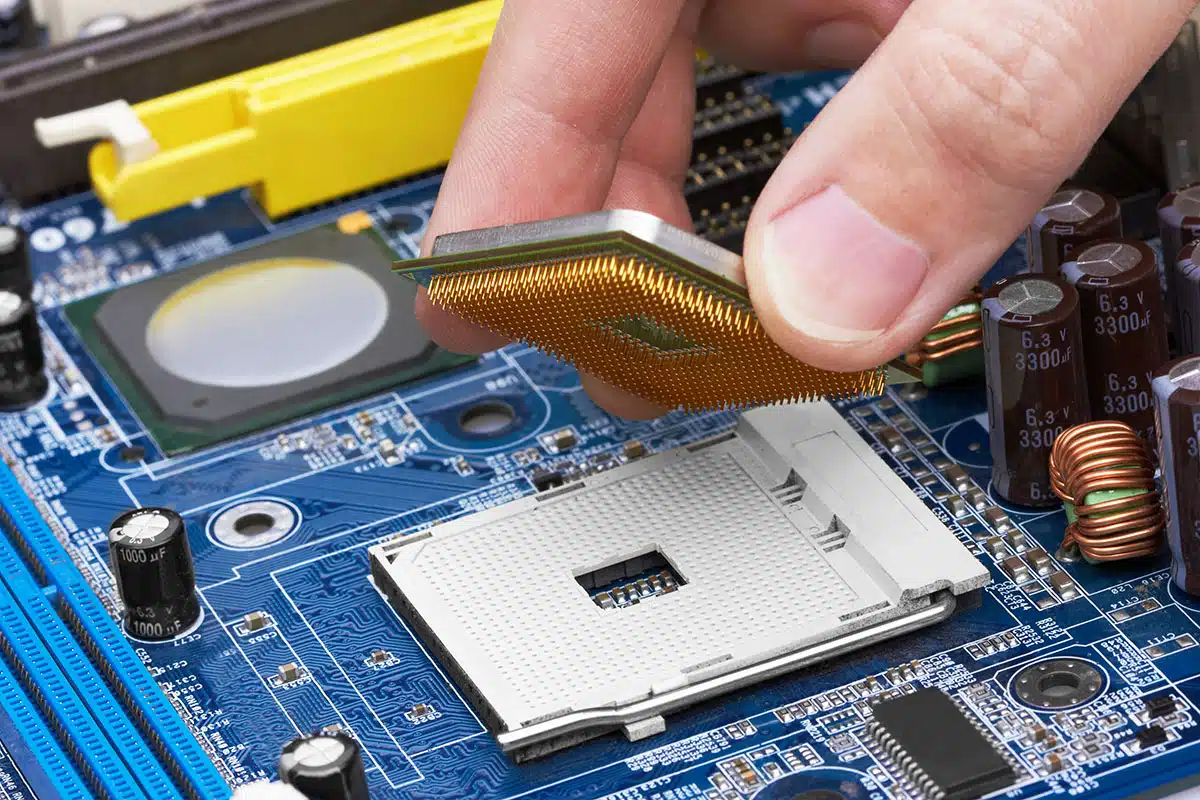What is product lifecycle management? A marketing strategy, devised by economists decades ago? A storage solution for engineering data? Or a tool that optimizes product development?
The answer is all three. Product lifecycle management (PLM) can be defined as a strategic approach that encompasses all the processes, tools, and methodologies needed to manage the entire journey of a product—from its conceptualization to the end of its life.
From inception to end of life, for hardware and PCBA design, PLM tools can add value to your electronic product at each stage.
PLM’s strength in product development comes from streamlining and optimizing all data, operations, and activities associated with a product’s lifecycle. It involves cross-functional teams, departments, and even external partners. For manufacturing, product lifecycle methods enable companies to increase process efficiency, enhance innovation, and improve time to market.
Given the breadth of the strategy, does the value outweigh the effort—and what net results can be expected? We’ll help uncover what’s involved and how PLM can be key in creating successful electronic products.
The Evolution of Product Lifecycle Management
Theories behind product lifecycles have been around for decades. In the 1960s, economists posited four fundamental stages for a “product life cycle”: introduction, growth, maturity, and decline. These stages began as a sales and marketing concept, but today the theory is also used as the basis for product development across multiple industries.
As with many tales of industrial innovation from the latter part of the 20th century, the evolution of PLM from a 1960s concept into a framework for streamlining manufacturing tracks with the rise of technology and computers. PLM’s journey started when electronic design came off the page and onto the computer screen with computer-aided design (CAD) and the subsequent need to manage and store engineering data.

Things really took off in 1985, when automaker American Motors Company (AMC) was looking to speed up the product development process of its Jeep Grand Cherokee. To do this, the company started using CAD software and created a centralized database for the project. This centralized system enabled designers and engineers to quickly access data, which led to greater consistency and increased accuracy. This innovation was a huge success and a pioneering move toward modern product lifecycle management.
Fast forward to today, when an increased ability to store digital information and advances in processing technology have ramped up PLM’s ability to offer a holistic framework for product development that results in efficient resource allocation and reduced time to market. It’s these overwhelming benefits that led to the adoption of PLM principles across multiple industries—including electronics manufacturing.
Product Lifecycle Management Success in Electronics Manufacturing
Utilizing PLM methodologies to manage the entire journey of a product clearly benefited the auto industry. But how does this translate to the complicated and ever-changing landscape of electronics? After all, electronics manufacturing is a sector that demands cutting-edge and high-quality products that must be delivered within short timeframes to satisfy customer needs and fickle consumer tastes.
In the complex and data-dense electronics manufacturing arena, the most powerful way to harness PLM has to be through a degree of digital transformation. While product lifecycle management is essentially a strategy, the most effective implementation of that strategy will come from a cloud-based system that integrates Enterprise Resource Planning (ERP) and Supply Chain Management (SCM) systems and leverages the capabilities of emerging technologies such as artificial intelligence (AI), the industrial internet of things (IIoT), and virtual reality (VR).
These technologies have infiltrated nearly all aspects of business. In fact, a recent report by Deloitte confirmed for a second year in a row that across industries, companies with greater digital maturity are three times more likely to report higher-than-average net profits and net revenue growth, when compared to organizations with low digital maturity.
Luckily, greater digital maturity doesn’t have to reside entirely in-house and can come from partnering with experts. A professional electronic manufacturing service (EMS) whose engineers are well-versed in product lifecycle management for manufacturing and production can give you the technical edge you need.
From inception to end of life, for hardware and PCBA design, PLM tools can add value to your electronic product at each stage. Here are some of the ways.
Concept, Design, and Development
The beginning of an electronic product’s life—when designers are tossing around ideas and solutions for every aspect of a product’s function—is an exciting time. Effective product lifecycle management requires designers, engineers, and managers to work together at multiple stages of product development.
Innovative Product Design: Planning for a product’s entire lifecycle is a multidisciplinary effort, one that yields multiple benefits. For example, at the inception stage of an electronic product’s development, product lifecycle management fosters creativity and innovation by bringing cross-functional teams together. In breaking down silos, design development is accelerated, and ideas are transformed into tangible solutions.
Prototyping: PLM relies on digital prototyping, which allows engineers to explore multiple design iterations virtually. This reduces the need for costly physical prototypes, creating an efficient design process, and pushing innovative products to market faster.
Component Optimization and Management: Electronic components are the building blocks of every electronic device, and component selection is an art in itself, especially when planning for a product’s entire lifespan and eventual recycling. For this reason, component choice is a critical challenge of PLM. And here’s where access to detailed records of component specifications and availability, such as Last Time Buy (LTB) or End of Life (EOL), enables informed decisions on component selection. For an industry where components can become obsolete in the blink of an eye, this is an invaluable aid in predicting how design innovations can affect the longevity of a product.
Manufacturing and Production

Production timing is vital in electronics manufacturing. Small delays can result in large holdups. Working with cloud-based PLM systems can mitigate potential problems and keep projects nimble by enabling several important functions.
Exception Management: Manufacturing electronic devices involves precision and intricate processes, so it’s inevitable that during operations some problems will arise. Product lifecycle management is an excellent tool for exception management with a unique ability to address deviations quickly and systematically. Time is money in production runs, so minimizing production bottlenecks and streamlining throughput can be a lifesaver.
Impact Assessment: Product lifecycle management tools also provide the means for assessing the impact of component scarcity on production schedules. When datasets are easily accessible and visible, engineers can evaluate the severity of production hiccups, whether it’s a short-term supply issue or long-term unavailability of a crucial input.
Agile Response to Challenges: In traditional manufacturing scenarios, the long-term unavailability of a critical component would lead to production halts and perhaps even a premature end to the product. PLM solutions, however, take a more agile approach. Component changes to the bill of materials (BOM) are quickly relayed to procurement departments, and costs and lead times are rapidly reassessed. This flow of information allows for impact assessment and alternative solutions to be quickly implemented.
Controlled Change Management: PLM tools facilitate controlled change management by providing modifications to circuit designs that are updated in the manufacturing dataset and seamlessly introduced into production. These changes can be swiftly but thoroughly verified and incorporated into the manufacturing process within days, rather than the months that traditional approaches might require.
Maturity and Support
Product lifecycle management doesn’t end when the product reaches customers’ hands. Keeping customers satisfied requires ongoing effort. As an integrated system, PLM can manage how the product is faring in the marketplace.
Compliance and Supplier Collaboration: In the heavily regulated electronics manufacturing industry, compliance with industry regulations and standards is crucial. PLM systems keep a vigilant eye on compliance throughout the product lifecycle, keeping up with changes and reducing the risk of noncompliance and related penalties.
Product Support and Maintenance: In addition to conducting trend analysis to anticipate future support needs, product lifecycle management can manage support and maintenance issues. This proactive approach helps identify potential faults before they become widespread. Making product adjustments during production is a more cost-effective move than recalling and replacing products due to inherent design flaws—it can also result in substantial cost savings over the product’s lifespan.
Improvements and Consumer Feedback: By using product lifecycle management tools to manage and analyze consumer feedback, engineers can resolve any design issues and modify future production runs or product iterations.
Supply Chain: With their links to supply chain management systems, PLM tools can manage supply chains while the product is on the market and in demand, ensuring consistency and reliability.
Sustainability and End of Life
Making electronics as sustainable as possible is an ongoing and evolving task. PLM systems’ planning abilities can ensure that planet-friendly options for their products are considered.
Component Reuse: Customers want to know that products are as green as possible. PLM systems can identify opportunities for component reuse in electronic devices. This enables manufacturers to explore environmentally friendly options, extending the lifecycle of valuable components and materials and reducing electronic waste.
Responsible Disposal: In situations where reuse is not an option, PLM practices ensure compliance with recycling regulations and environmentally responsible disposal by systematically tracking and documenting product components and materials.
PLM Continues to Evolve
From cradle to grave, when used expertly, product lifecycle management systems can truly optimize a product. These systems can be used for nearly every aspect of product management—from gathering requirements, creating designs, and simulating product functionality, to streamlining manufacturing processes, tracking supply chains, and collecting data on performance.
PLM’s ability to do this comes, in part, from its origins as a strategy to enable companies to stay ahead of the curve. During the past few decades, PLM software has evolved from simple tools for managing product data to complex systems that can automate many aspects of the product development process. And as computing power continues to grow, PLM is sure to become an even more robust design and manufacturing tool for electronics companies.